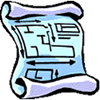

Chapter 3 Atoms: The Building Blocks of Matter
Multiple Choice: Choose the best word or group of words that best complete the sentence.
- A Greek thinker who was credited for the first atomic theory was a) Aristotle b) Democritus c) Dalton d) Thomson
- The fact that a chemical compound contains the same elements in exactly the same proportions by mass regardless of the size of the sample or source of the compound is known as a) law of multiple proportions b) law of conservation of mass c) law of definite proportions d) law of conservation of energy
- The law of conservation of mass, the law of definite composition and law of multiple proportions can be explained by a) Dalton’s atomic theory b) Democritus first atomic theory c) Rutherford’s gold foil experiment d) all of the above
- a) proton b)atom c) electron d) neutron is the smallest particle of an element that retains the chemical properties of that element.
- The electron was discovered by a) Dalton b) Rutherford c) Millikan d) Thomson in a series of experiments using the cathode ray tube.
- The mass and charge of the electron was credited to a) Millikan b) Rutherford c) Aristotle d) none of the above
- The nucleus was discovered by a) Thomson b) Chadwick c) Rutherford d) Dalton
- Atoms of the same element that have different masses are called a) proton b) neutron c) isotopes d) none of the above
- The total number of protons and neutrons in the nucleus of an atom is called a)atomic number b) atomic mass c) mass number d) nuclide
- Hydrogen-2 is an example of a) isotope b) proton c) neutron d) electron
- One atomic mass unit is equal to a) ¼ of a boron-4 atom b) ½ of a hydrogen-2 atom c) 1/3 of a boron-3 atom d) 1/12 of a carbon-12 atom
- The weighted average of the atomic masses of the naturally occurring isotopes of an element is a) atomic mass b) average atomic mass c) atomic number d) mass number
- The symbol for atomic number and mass number are a) Z and A b) A and Z c) A and M d) none of the above respectively.
- The SI unit for the amount of substance is a) mole b) grams c) kilograms d) none of the above
- 6.02 X 1023 is known as a) Avogadro’s number b) atomic number c) mass number d) all of the above
Solve the following problems and conversion in three steps a) formula b) substitution c) final answer with the correct number of significant figures and units.
- 150.0 grams of S ___________atoms of S
- 5.40 grams of B ___________mole of B
- 2.25 X 1025 atoms of Zn _____mass in grams of Zn
- 0.350 mole of Na __________grams of Na
- 1.204 X 1024 atoms of Cl ____mole of Cl
- Calculate the average atomic mass of magnesium based on the following information: 78.70% Mg-24 whose mass is 23.985, 10.13 % Mg-25 whose mass is 24.986, 11.17% Mg-26 whose mass is 25.983.
Fill in the missing data:
| Symbol |
He |
U |
||||
| Atomic No |
42 |
|||||
| Mass No |
4 |
40 |
210 |
95 |
||
| No. of protons |
20 |
82 |
||||
| No. of neutron |
110 |
143 |
||||
| No of electrons |
74 |